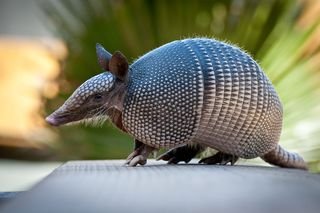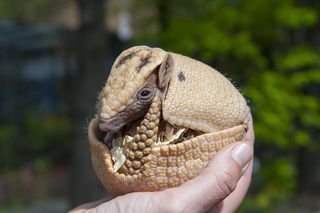Facts about Armadillo you didn't know
History Of Armadilo
An ancient Maya legend says that the first armadillos were created to teach a lesson in humility to a couple of minor gods. According to the legend, Hachakyum, the Maya Sun God, sat the two unruly deities down on a bench before all the other gods. The bench was suddenly transformed into a pair of armadillos, which immediately jumped up in the air — tumbling the two disobedient gods onto their backsides in disgrace.
Somehow this humorous tale seems to fit the armadillo rather well. It is, after all, a rather odd-looking beast; the only mammal with a true shell must have looked nearly as strange to the early Spanish explorers as the duck-billed platypus did to the first European who spotted one. The name “armadillo”, or “little armored thing”, does originate from the Spanish conquistadores. The Aztec name was Azotochtli, which means “turtle-rabbit.”
The British author Rudyard Kipling wrote in one of his “Just So Stories” for children that the armadillo was actually born out of an alliance between a turtle and a hedgehog. This tongue-in-cheek story explains that to escape the jaguar, the turtle taught the hedgehog how to be less prickly and more armored, and the hedgehog taught the turtle how to curl up into a protective ball. The end result was the first two armadillos, which thoroughly confused the hungry jaguar.
We know today that armadillos are not turtles, hedgehogs, rabbits, or any cross between these animals. The armadillos belong to the order Cingulata, family Dasypodidae.
since it's not a rabbit or turtle ir any related animal then ** WHAT IS ARMALIDO **
Definition of Armalido

Armadillos are New World placental mammals in the order Cingulata with a leathery armour shell. The Chlamyphoridae and Dasypodidae are the only surviving families in the order, which is part of the superorder Xenarthra, along with the anteaters and sloths. The word armadillo means "little armoured one" in Spanish. The Aztecs called them āyōtōchtli [aːjoːˈtoːt͡ʃt͡ɬi], Nahuatl for "turtle-rabbit": āyōtl [ˈaːjoːt͡ɬ] (turtle) and tōchtli[ˈtoːt͡ʃt͡ɬi] (rabbit).
The Portuguese word for "armadillo" is tatu which derives from the Tupi language.
Similar names are also found in other, especially European.

Isolated from the rest of the world, and protected from predators with their bony armor, the armadillos flourished. They were relatively safe from predation; that is, until a land bridge developed between North and South America. Large canine and feline predators moved southward along this bridge, wreaking havoc on the native South American animals. Fossil records show that around seventy percent of the indigenous South American mammals were destroyed. The armadillos were not immune to these new and larger predators — although their shells are made of bone, they are rather thin — even a medium sized dog would have little trouble biting through.
With there bony shell which have the ability to fold itself just like a turtle it has high tendency of living long because it will be protected from its predator..

..
See you on my next post..
If u love this post please Upvote..
Congratulations @zikyfranky! You received a personal award!
Click here to view your Board
Congratulations @zikyfranky! You received a personal award!
You can view your badges on your Steem Board and compare to others on the Steem Ranking
Vote for @Steemitboard as a witness to get one more award and increased upvotes!